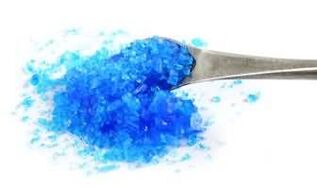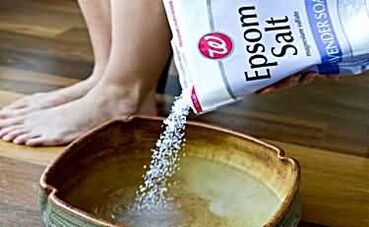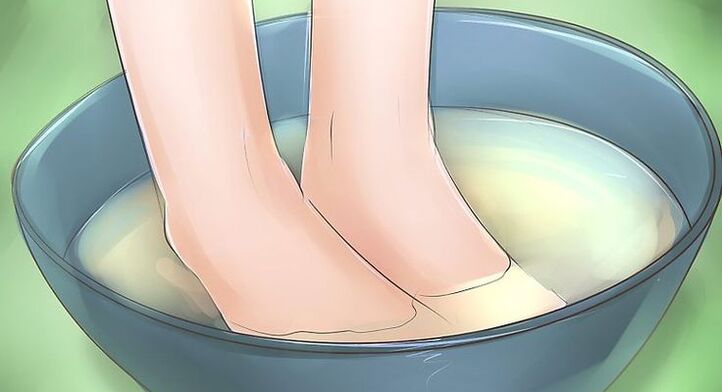Fungal diseases affecting the nails and feet cause severe discomfort and can significantly affect a person's quality of life. In addition, nail fungus is characterized by a long and complex treatment process, when it is detected at a later stage.
However, it is easier and relatively uncomplicated to deal with it if you start treatment in time when the initial symptoms of a fungal infection first appear.Traditional medicine suggests practicing some recipes that can solve the problem of fungal development.
Iodine protects nail health
Having a protein structure, dermatophyte fungi parasitize the nails, the skin of the feet and between the toes, and eat the horn scales on the skin and the keratin that is part of the nail plate.
Therefore, it is not surprising that the most popular remedy for treating onychomycosis at home is iodine alcohol solution. Iodine solutions have an adverse effect on the structure of protein cells, destroying them; moreover, iodine is a relatively strong antiseptic and has fungicidal properties (resistance to mold formation).
Do not forget that iodine is a very active substance and, if handled incorrectly, can cause some harm, such as chemical burns, etc.
The reasonable price of iodine makes this drug attractive to users for the treatment of nail fungus, as well as for prevention purposes. Keep in mind the rules that must be followed when using iodine solution for medical purposes.
Safety rules when working with iodine
- Treating the skin with iodine solution can cause irritation and allergic reactions.
respond. Therefore, before you start using it, check the skin reaction by wiping the area at the bend of the elbow with iodine solution. - The regular use of iodine solution gives a strong pigment to the nail in a yellow color, which can only be removed with new nail growth.
- If used incorrectly or if the permitted dose is exceeded, chemical burns or inflammatory skin lesions (dermatitis) may occur.
- Only affected nails and skin areas should be treated and only at the primary symptom stage.
Recipe based on iodine solution
- Recipe 1. An alcohol solution of iodine (5%) is applied one drop to each affected nail twice a day, in the morning and before going to bed, using a cotton swab for convenience. To prevent disease, as well as for additional strengthening, the same solution, but in a smaller dose, can be lubricated on a healthy nail plate.
- Recipe 2. The six-week course of treatment is divided into three stages every fourteen days. During the course, the infected skin and nail areas are treated alternately: Castellani liquid in the first two weeks, iodine solution in the second stage, vinegar solution (9%) in the last two weeks.
- Recipe 3. The solution is prepared in advance, consisting of the following components: iodine, chloronitrophenol, vinegar essence, garlic juice, in equal parts, one teaspoon of each component. This solution should be used to treat infected nails every day before going to bed. The nails should first be steamed and the soft part removed. Before use, the medicinal mixture must be shaken.
When treating nails with any manicure accessory, you should remember: to avoid infection of healthy nails, the affected area should be treated with a separate tool.
Treatment with copper sulfate

Copper sulfate, or copper sulfate among people, is most often used to accompany the traditional treatment of fungal infections. It occurs in crystalline form, is easily soluble in water, and is non-toxic. Two forms can be used for treatment.
- Copper sulfate solution. Can be made at home. A teaspoon of copper sulfate crystals dissolved in 1 liter of boiled water. The resulting solution is very concentrated, so it should be used in liquid form for treatment: 1 tbsp. l. solution per 1. 5 liters of water. Using this solution, bathe the feet for ten minutes before treating the affected skin and nail areas with the medicines recommended by the doctor.
- Copper sulfate ointment. Copper sulfate crystals are calcined on a hot surface until the color changes to gray or white. Then mix with other ingredients: yellow sulfur, tar or goose fat, one teaspoon each. The resulting ointment is used to treat sore nails every day until recovery is complete.
Sea and table salt for the treatment of fungal infections

Sea and common salt can be added to a therapeutic foot bath. At the same time, the affected areas on the skin of the feet and nails are disinfected. As a rule, such antiseptic procedures are aimed at fighting infections that live on the skin and are necessary to prepare the nails for the subsequent application of medicinal ointments to them.
Salt alone cannot cure fungus, but it is often used as part of medicinal ointments and mixtures made according to folk recipes.
For example, garlic water is very suitable against advanced fungal infections; it is used to treat the affected feet and nails twice a day. This water is easy to prepare at home. Ground garlic cloves are mixed with salt until a paste is obtained. The resulting mixture is dissolved in 200 ml of water. After the last cooling, dissolve another 4 tbsp. l. salt.
An unusual use of ordinary soda
- Recipe 1. The daily use of soap and soda baths will contribute to a better penetration of the medicinal components contained in the medicine directly to the lesion. This is often difficult, because the affected nail is quite thick, grows quickly and acts against penetration, and soap and soda baths soften the nail plate. Mix 3 cups of baking soda and 3 tbsp. l. grated soap, then dissolve the resulting mixture in 7-10 liters of water. Legs are inflated for 20 minutes a day for 4-5 days.
- Recipe 2. A certain amount of soda is diluted with water to form a paste, which is used to cover infected nails. A few minutes after applying the soda paste on the nails, add some lemon juice. Then the mixture is removed, the nails are washed with soap and treated with an antifungal agent. This medicine is also used only as a simultaneous treatment.
The treatment process uses birch tar
Birch tar is a powerful medicine for treating all kinds of skin diseases. Therefore, you can treat your feet with natural birch tar. However, the legs are prepared first. The feet, steamed in hot soapy water, are subjected to further treatment: the rough and affected skin on the feet is peeled off, and the infected nails are cut. Then the dry skin of the feet is lubricated with birch tar that is applied to the cotton using a rubbing motion. You should not wear socks or shoes for the next hour and a half. Give the tar time to absorb into the skin.
Tar is no less effective as a treatment in ointments or mixtures. You can prepare your own tar ointment, with a tar content of 5-10% in the first stage. You need a rich nourishing cream or some kind of fat. Natural tar is added to the cream and everything is thoroughly mixed. The ointment is ready to use.
Another effective option for treating fungus is sulfur-tar ointment, which consists of tar, sulfur powder, base in the form of cream or fat - in the ratio: 3: 2: 10, respectively. Apply a thin layer of ointment to the affected area, let it dry and paste over it.
The use of tar soap is useful to prevent any skin disease, as it contains up to 12% pure tar and has antiseptic properties. You should choose handmade tar soap, the usefulness of the composition is beyond doubt.
Celandine for clean skin
Celandine is a poisonous plant, the juice of which is successfully used against fungus and other skin diseases.
- Celandine juice. Celandine juice is used to treat diseased skin and nail surfaces. The freshly squeezed juice is mixed with alcohol (70%) in a 1: 1 ratio and infused over the next 24 hours. The treatment process takes about a week, the treatment is carried out regularly 3-4 times a day on the nails and feet that have been prepared beforehand.
- Celandine absorption. Add 100 g of dry celandine leaves to 1 liter of boiling water. After half an hour, the resulting infusion is added to the foot bath and the feet are steamed for 20 minutes every day.
- ointment. Celandine is part of medicinal herbal ointments to combat fungal infections. Add 5 drops of fresh celandine juice, 2 drops of oregano and 2 drops of previously prepared calendula tincture to cooled boiled water (4 tablespoons). Treatment with such an ointment will take about 10 days, but the damaged area should be treated at least three times a day.
- Oil of celandine. You can use celandine oil, which is sold in any pharmacy, or make it yourself at home, although this process is quite labor intensive.

It is still better to use folk remedies for nail fungus in combination with traditional medicine - the effect will be stronger and the time for treatment until complete recovery will be significantly reduced.
















